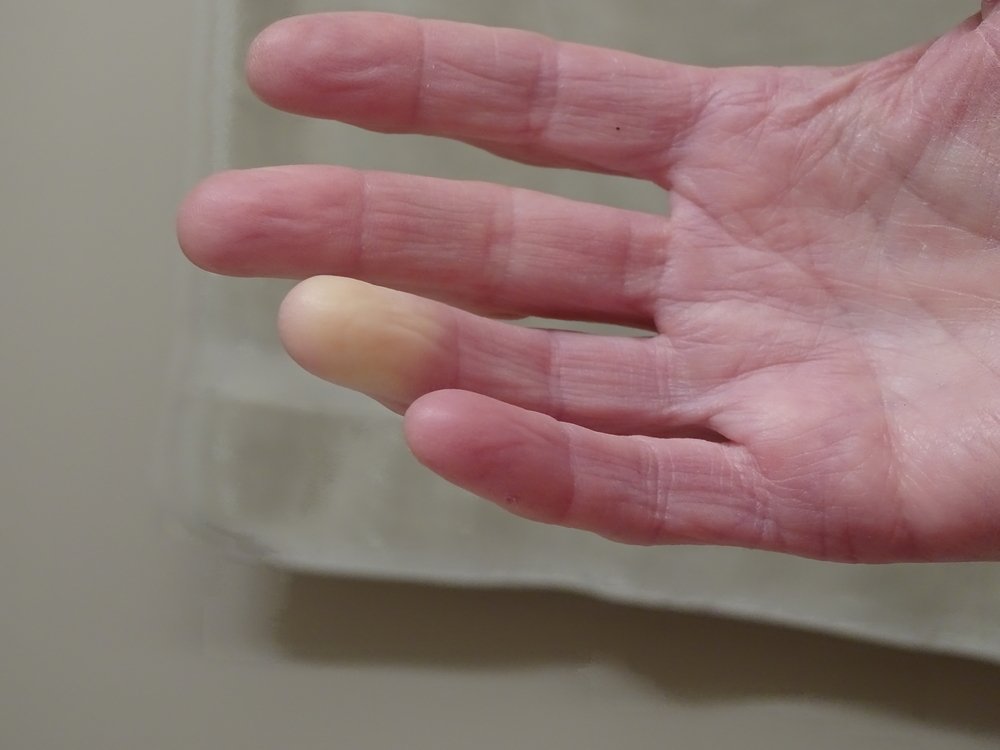6 Scleroderma Complications That Need Treatment

Scleroderma is an autoimmune disease that can cause many different symptoms and complications for patients. No two patients are alike and all will experience the illness differently. However, there are some symptoms and complications that are commonly associated with scleroderma that will require treatment.

Raynaud’s Phenomenon
According to sclero.org, Raynaud’s phenomenon is an extremely common complication that affects up to 90 percent of scleroderma patients. Treatment can improve blood flow to prevent fingers and toes from becoming affected by temperature changes. Raynaud’s is usually treated using either calcium channel blockers which prevent calcium from entering the cells in the blood and heart, or angiotensin II receptor antagonists or angiotensin converting enzyme (ACE) inhibitors, both of which stop certain chemicals and enzymes from constricting blood vessels. PDE-5 inhibitors can also help to open up constricted blood vessels, allowing the blood to flow more freely.
Patients are also advised to keep their hands warm in colder temperatures and to try and avoid stress as much as possible.

Kidney Disease
Kidney involvement in scleroderma can also occur. In these cases, the kidney disease is treated with angiotensin converting enzyme (ACE) inhibitors that work by lowering blood pressure and blocking the enzymes that constrict blood vessels.

Heartburn
Heartburn or acid reflux is another common complication that many people with scleroderma experience. It’s usually treated with over-the-counter antacid medications. In more severe cases, proton-pump inhibitors and H2-blockers can lower the levels stomach acid.
MORE: How to deal with scleroderma-related GERD.

Muscle Weakness and Joint Pain
In many cases, muscle weakness and joint pain can be treated with over-the-counter medications and topical creams. Non-steroid anti-inflammatory drugs can be used to help ease pain in the joints and muscles. Patients may need steroids to manage more severe pain. Immunoglobulin or immunosuppressive medications may also be prescribed. Patients are often advised to have physical therapy or occupational therapy to improve muscle strength and joint flexibility.

Interstitial Lung Disease
Interstitial lung disease is a group of chronic lung diseases where the tissue in the lungs becomes damaged. (Pulmonary fibrosis is the most common.) Antifibrotic medications can help slow down the progression of the disease and improve the symptoms. In addtion, patients may also be prescribed immunosuppressants which slow down the body’s immune system so that it stops fighting itself.

Pulmonary Hypertension
High blood pressure in the lungs can lead to pulmonary hypertension. This is a chronic lung disease that affects around 10 percent of scleroderma patients and tends to occur between five and 10 years after the onset of scleroderma. If left untreated, it can lead to right heart failure. Pulmonary hypertension is treated with prostaglandin derivatives which relax blood vessels helping to increase the flow of blood to the lungs.
PDE5 inhibitors help to relax muscles, lowering blood pressure and increasing blood flow. In addition, endothelin receptor antagonists may also be prescribed to prevent endothelin-1 proteins from binding to its receptors, leading to an increase in blood flow to the lungs.
MORE: How scleroderma and pulmonary hypertension are connected.
Scleroderma News is strictly a news and information website about the disease. It does not provide medical advice, diagnosis or treatment. This content is not intended to be a substitute for professional medical advice, diagnosis, or treatment. Always seek the advice of your physician or other qualified health provider with any questions you may have regarding a medical condition. Never disregard professional medical advice or delay in seeking it because of something you have read on this website.






